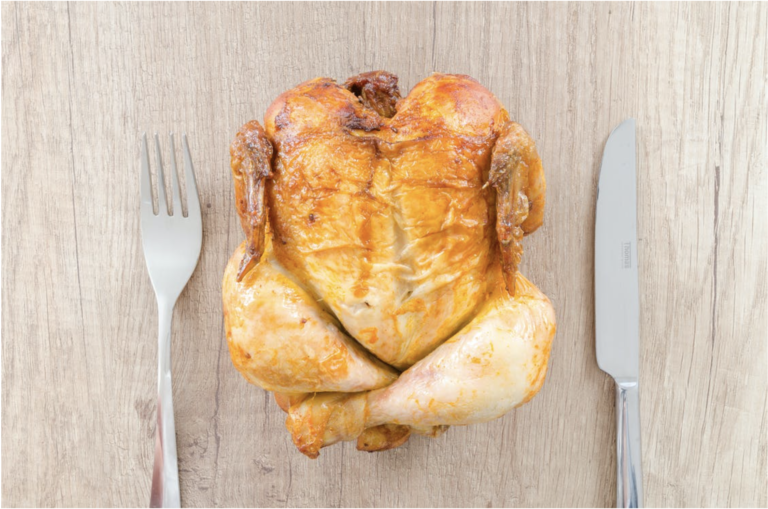It all comes down to biology


Have you ever been in an argument where it’s clear you’re wrong, but you just can’t admit it? It feels like yielding to the other person after taking such a strong stance would be unbearable.
Welcome to the dark versus light meat argument in my house.
I grew up eating white meat while my boyfriend typically cooks with dark meat. As I’m sure you can guess, this has led to some debating.
At first, I didn’t really notice a difference — so I took a stand for white meat. It’s what I grew up with.
But, with each meal that I cooked, my boyfriend would question me. “Really you don’t think this is dry? You think this is better?” And once I started to pay attention, of course he was right.
The only problem was, I had already laid down my reputation for white meat nearly two years earlier when our relationship began. I couldn’t just give in. Or maybe that’s just me being stubborn?
I know dark meat tastes better, but let’s just keep that as our little secret for now.
So, what’s the difference between white and dark meat anyways?
These two types of meat are different starting at a microscopic level.
Light meat is composed of muscle fibers scientifically called fast twitch fibers. This means they are muscles that are used for quick, yet brief movements. Think of a turkey being startled and quickly flying a few feet away.
Now, dark meat muscles are made up of an entirely different type of muscle fiber called slow twitch fibers. These muscles are used for long and persistent actions. Imagine a cow standing and chewing on hay all day.
But why would dark meat taste any better than light meat?


To keep those slow twitch fibers fueled for such long, sustained movements, two compounds are used to produce energy in dark meat: glycogen and fat. This way the muscles shouldn’t ever run out of energy. There’s always a backup source.
On the other hand, fast twitch fibers — which make up white meat — only use glycogen to produce energy. No fat here. But that’s okay, these muscles are only responsible for short, panicked movements anyways.
And it’s really the presence of those fat reserves in dark meat that makes it taste juicier while light meat lacks this extra fat and can be rather dry and flavorless.
So, what exactly makes dark meat look dark?
In order for fat to be turned into energy, muscles need oxygen. This means the slow twitch fibers that make up dark meat must always have a steady supply of oxygen.
A special protein named myoglobin is responsible for bringing oxygen from the bloodstream into the slow twitch fibers. It’s myoglobin that actually gives the meat a darker red color since it contains iron to help carry the oxygen.
On the other hand, the fast twitch fibers that make up white meat don’t use fat as an energy source, so there’s no need for myoglobin and the muscles remain lighter in color.
What cuts of meat are dark versus light?


Remember, any muscle used consistently for long periods of time will yield dark meat. For chickens, who spend most of their life standing and grazing, their legs and thighs will be dark meat. On the other hand, their breast and wings will be white meat since chickens rarely fly.
Turkey meat has a similar breakdown since they’re mostly walking and milling around, rarely flying great distances.
For birds that do spend much of their time flying—take ducks for example—their wing and breast meat is dark since these muscles are used so frequently.
If you have long been a devotee to dark meat, it’s this simple difference of fat that lends it a juicy, more flavorful taste compared to white meat.
I know for some of us (I’m pointing at myself here), it might be hard to admit this, but the science doesn’t lie.
So, the next time you have a choice between chicken breast or chicken thighs, see if you can taste the difference.


3 Responses
I don’t even know how I ended up here, but I thought this
post was good. I do not know who you are but definitely you are going to a famous blogger if you aren’t already 😉 Cheers!
I like the valuable info you provide in your articles.
I’ll bookmark your blog and check again here regularly. I’m quite sure
I will learn many new stuff right here! Good luck for the next!
Great info. Lucky me I recently found your website by chance
(stumbleupon). I’ve bookmarked it for later!